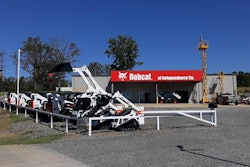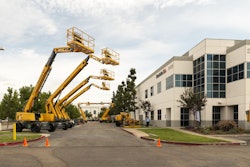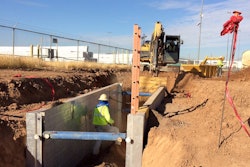
“It was a solid third quarter, but not a perfect one,” is how Matthew Flannery, CEO of United Rentals summed up the company’s 3Q results in a conference call Thursday. Having said that, though, Flannery added the company had posted “the best revenue numbers of any quarter in our history.”
Compared with the same period last year, United Rentals reported that total revenues increased 17.6 percent to $2.488 billion and rental revenue increased 15.4 percent to $2.147 billion.
The company delivered “solid revenue growth driven particularly by strength across our core construction markets, partially offset by slower industrial growth,” said Flannery.
Results from United Rental’s internal customer confidence index, in which the company surveys its larger customers, show the company’s markets remaining strong, Flannery says. “Sixty percent of our customers believe that 2020 will be better than 2019 and 97 percent of customers say it will be flat to better. That’s a good indicator for us.”
Of particular note in the third quarter was the company’s $198 million in used equipment sales, including older assets from the upstream oil and gas market. This market prompted the company to redistribute some equipment, leading to increased transportation costs in the quarter.
“The used sales environment continues to be healthy and we sold $132 million more fleet at OEC (original equipment cost) than last year,” reported Jessica Graziano, chief financial officer. “This included a significant increase in sales through our retail channel, which made up 60 percent of our overall sales.” The adjusted gross margin on used sales, however, was down to 46 percent from 50 percent, a decline the company attributes to the equipment mix and selling older oil-patch fleet at auction.
“We’re on pace to purchase between $2.05 billion to $2.15 billion of cap ex for the year,” Graziano said. “We’ve adjusted rental capex down for the year by $50 million as we anticipate selling more used equipment than originally expected. That will refresh more of our fleet in a strong used market and position us well going into 2020.”
“We still want to keep our fleet age as fresh as we can as we’re still in a growth cycle,” Flannery said. “If anything, we want to spend 5 to 10 percent more for replacement in 2020.”
Fleet productivity — or the combined impact of changes in rental rates, time utilization and mix on owned equipment rental revenue — decreased by 1.3 percent compared with a year ago, which United attributes to the impact of its BlueLine and Baker acquisitions.
After absorbing its these acquisitions, Flannery says sales territories have been finalized and “we’ve added more sales talent in the field to expand our sales coverage and enhanced our outreach program to reactivate dormant customers.”
Flannery adds the company is also making significant investments in its fleet mix, including continued investment in its specialty solutions division, which includes trench, power and specialty equipment such as pumps. “Having the right fleet in the right markets delivers on two fronts,” he says. “It helps solve more challenges for our customers and it’s also key to our strategy for improving return on capital.”
Construction remains high
United Rentals’ customer surveys indicate that construction has remained strong, a trend the company says should remain intact. “All three construction sectors – nonresidential, infrastructure and residential – are showing good growth,” Flannery says, adding that nonresidential rental revenues were up almost 9 percent pro forma in the quarter. “Our focus on infrastructure continues to pay dividends as it now accounts for double digit percentage of our total rental revenue,” he says.
These gains were offset by some industrial verticals, including oil and gas. “In general, industrial was more of a mixed bag than it was in the first half of the year,” Flannery said. “For the first time, construction and industrial activity appear to be on somewhat different paths.”
The company’s Specialty Solutions group saw a 21 percent increase in rental revenue for the quarter. United says it opened eight Specialty Solutions cold-start locations in the past three months “bringing that network total to 361 locations against our target of 363 locations by year end,” Flannery said. The company currently has a total of 1,172 rental locations in North America and 11 in Europe and has approximately 19,000 employees.
United has both tightened and decreased its 2019 total revenue outlook from a range of $9.15 billion to $9.45 billion to $9.25 billion to $9.35 billion.











